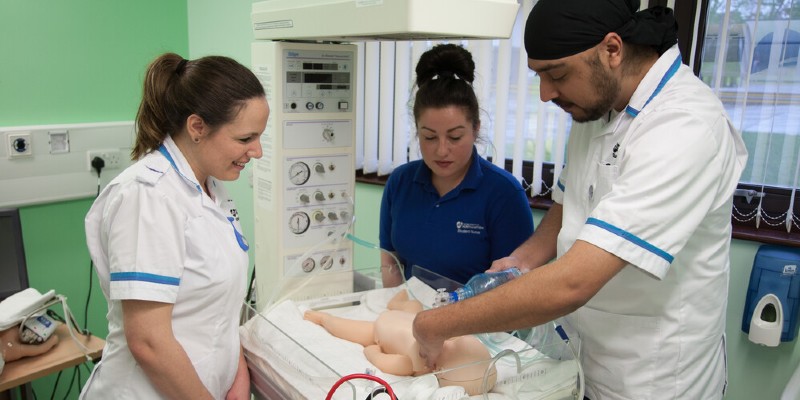
The UK government’s long-awaited NHS workforce plan for England has been released today (30 June). It sets out a 15-year vision to increase the number of nursing staff in England but so far is light on required detail and fails to acknowledge the investment needed in the existing workforce to make the vision a reality.
It pledges to increase nursing degrees by more than a third over the next five years, and to accompany this by a 40% rise in nursing associate training places over the same period.
In addition, it says more training places will be offered through degree apprenticeships so staff can “earn while they learn” and proposes that nursing students take up jobs as soon as they graduate in May, rather than waiting until September as they do currently. It also asks the Nursing and Midwifery Council to consider reducing the number of clinical placement hours nursing degree students undertake.
While the RCN welcomes the ambition of a plan that seeks to create 170,000 more nurses by 2036/37 it has serious concerns about how realistic this is without proper investment in the existing nursing workforce and more financial support for those seeking to join the profession. Patient safety must be the guiding principle for any reform.
RCN General Secretary & Chief Executive Pat Cullen said: “You can’t recruit your way out of a retention crisis, and we wish to see detailed plans to keep the experienced staff needed to make any proposals work. The plan must not forget that effective ways to attract people into the profession is to pay staff fairly and demonstrate there are options for career progression.
"Targets alone will not deliver the staff that the NHS needs to be able to care for patients now. Nursing leaders would have wished to see greater reference to patient safety challenges and recognition of how current shortages are impacting on staff and retention at present.
“Financial support for university nursing students, not addressed in this plan, is crucial to attract enough people into nursing and keep them there until they qualify. Proposals to expand training should include funding to ensure nurse trainees are not landed with huge and off-putting debt. Equally, employers will expect to see any plans to develop new apprenticeship schemes to be funded properly and rules changed so they can take them up more easily. All student nurses must have the support they need from experienced staff for a positive learning experience.”
While expanding places is key, as it currently stands, employers struggle to find enough clinical placement opportunities for nursing students because there aren’t enough experienced nurses to support and guide them during their education. The responsibility to expand training must not fall on local health systems before central government addresses key issues like inadequate pay and funding.
With such a rapid expansion of degree places, and a widening of routes into nursing through a work-based apprenticeship programme, it’s feared implementation of the plan will stumble at the first hurdle. There must be clarity on how clinical placement capacity will be secured in a pressured service without compromising patient safety as well as plans to grow the university nurse educator workforce, which is at crisis point.
While we’re reassured that the workforce modelling used to inform the plan’s staffing projections has been independently assessed, with a promise to update projections every two years, we remain firm that government accountability for nursing workforce planning and supply should be enshrined in law. This is needed so there are enough staff, with the right skills, in the right place at the right time, to meet the population’s health needs. We believe registered nurses should not be substituted by those who haven’t been educated to degree level and that the government should introduce legally binding staffing level standards. Guidelines are not enough.
Pat added: “The release of this plan must mark a moment where all players begin to shift to discussing meaningful and long-term solutions before the staff shortages bite even harder. Regular reviews will ensure its relevance and will prevent the plan from gathering dust on a shelf.
“I would like to say clearly to all parties that I’m willing and ready to work with them on urgently implementing this plan. Most importantly, to discuss how we can ensure the current gaps are addressed to ensure it leads to successful, sustainable changes for the future of the nursing workforce. While it is a long-term plan, the workforce growth could hardly come quickly enough.
“Nursing leaders eagerly await the full details, to underpin these ambitious numbers, which will be key to the success of the first NHS workforce plan alongside similar planning for social care and the wider health and care system. We all expect the plan to address a number of things crucial to our profession. As we digest how this will be implemented, all eyes will be on the amount of committed funding this comes with and for what duration – long-term plans need long-term assured funding. Today’s vacant posts put patient care at risk. Patient safety must underpin the whole plan.”
The RCN looks forward to working in partnership with the government and NHS England to learn more about the plan, its implementation and funding. It talks a lot about targets and education reform but lacks detail on the methods for delivering those targets and assurance on upholding nurse education standards, crucial to care quality and patient safety.
In the immediate term, the government must address how the severe shortage of nursing staff is contributing to working conditions and burnout, and capture data on safe staffing levels.






